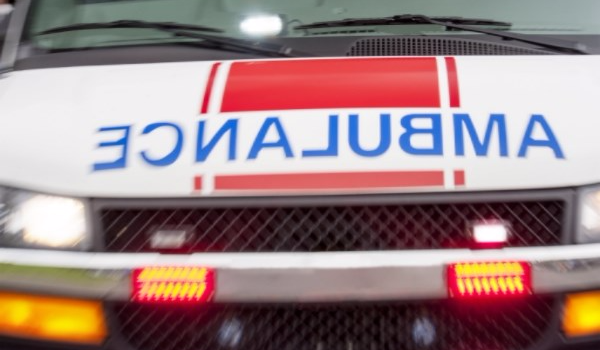
The National Weather Service publishes its forecasts in all caps no matter what the weather. It might be MOSTLY SUNNY, WITH A HIGH NEAR 75, or it could be HAIL AND DAMAGING WINDS, WITH SEVERE THUNDERSTORMS, but in either case it'll be shouted in an all-caps warning, like a house is on fire. But earlier this month, the weather service took a typographic sedative and officially started using mixed caps in its weather forecasts.
That sort of news would often be relegated to a press release, or more likely a joke on a late-night TV show, but ProPublica journalist Lena Groeger used the peg to dive down the rabbit hole of typography. The Huffington Post talked to Groeger about how she transformed this small news item into a fascinating essay about type choices and how they can have life-or-death consequences.
The premise of this story, or rather the news peg, is based off a press release: The National Weather Service is giving up ALL CAPS. What inspired you to dive deep into typography?
I've always loved typography. It's what got me into graphic design in the first place. When I saw the National Weather Service announcement, a couple of other examples in typography adjustments came to mind. The first was how the font on highway signage has been changed to Clearview from Highway Gothic to make it easier for drivers to read. I also thought of Edward Tufte's book Visual Explanations. He talks about how using too many signals, like all caps, bold, italics, all at once can make something important harder to read. The surgeon general's warning that appears on a cigarette billboard in ALL CAPS, underlined and surrounded by a black border, is a great example of that.
You have so many great examples of terrible typography. How did you find them?
I didn't have to do too much research as there was a lot out there. I came across an MIT study on vehicle displays pretty quickly. Then as I was writing about ALL CAPS I wondered why terms and conditions are always that way. I had no idea it was because of a law on how the lettering needs to be conspicuous.
What surprised you in your reporting?
That NASA had a document on typography! But once you find out that's the case, you think, "Of course NASA is on top of that." I was mostly struck by how many best practices in design are ignored in a lot of fields mostly because of legacy systems. Typewriters are still defining what words look like today.
Let's talk about fonts. Do you have a favorite?
I've always liked Garamond. It’s sophisticated and clear, and it doesn't call too much attention to itself. In its italic version there's this wonderful ampersand that looks like a piece of art. But for general use, my new favorite font is Atlas Grotesk. It's a clean sans serif font like Franklin Gothic. It’s good for little labels in charts and graphics. It's easy to read and gets the message across.
After your piece posted, did anyone write or tweet other examples of typography gone awry?
No, but I got this great email from Glenn Fleishman, who also had written about ALL CAPS this week. He wanted to pass along his essay on the history of using all caps to signify shouting. He even found an instance from the 19th century.
Want to read more about how a SHOUTY typeface is not only annoying, but also dangerous? Read Groeger's piece.
Go Behind The Scenes With Other Reporters:
- This Is What It’s Like To Go Back to Rikers
- You’ve Never Seen These Black History Photos Before
- A Glimpse Into The Syrian Refugee Crisis Through Virtual Reality
- Here’s Why College Costs So Much
- Newsletter Tips To Live By From Lena Dunham’s Lenny Letter
- What It’s Like To Report From The Front Lines Of The Zika Virus
